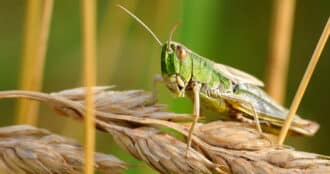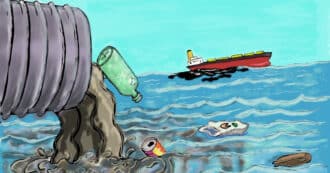By Rabbi Yonatan Neril, Lianne Nibley and Hannah Braunstein of The Interfaith Center for Sustainable Development.
In the last week of April, 2013, over 150 presenters and hundreds of others participated in The First International Jerusalem Symposium on Green & Accessible Pilgrimage. The event focused on the powerful connection between pilgrimage to holy cities and ecological awareness and action, which enables more meaningful pilgrimage as well as a more sustainable planet. Spanning five days, the Symposium was organized by Green Pilgrim Jerusalem. Co-sponsoring organizations included the Alliance of Religions and Conservation, the Green Pilgrimage Network, The Interfaith Center for Sustainable Development, and more.
Why is green pilgrimage important? This year the largest gathering in human history took place. 80 million Hindu pilgrims went to Allahabad, India and attended the Maha Kumbh Mela, which takes place every 12 years. According to estimates, more than 200 million people become pilgrims each year. So among faith adherents, pilgrimage is a rather common action, and one that has significant environmental implications. The Symposium examined not only green and accessible pilgrimage to Jerusalem, but also to other cities in Israel, the West Bank, and internationally. International representatives attended the Symposium from various pilgrim cities around the world. The Symposium concluded with a framework of principles agreed upon for a vision of Green and Accessible Pilgrimage. Regarding green issues, it envisioned ‘promotion of a clean sustainable environment, comprehensive waste collection, treatment, and recycling, water conservancy, renewable and efficient energy, preservation of indigenous fauna and flora,” and more.
Opening Gala, Sunday, April 21st, 2013
The Symposium, hosted at the Jerusalem International YMCA, began with faith leaders, scientists, entrepreneurs, and environmentally conscious citizens mingled outdoors on the patio. In the Auditorium, Jerusalem Mayor Nir Barakat and Deputy Mayor and Green Pilgrimage Ambassador Naomi Tsur welcomed guests to the Symposium and spoke about the innovative combination of pilgrimage to holy cities and ecological concern. Deputy Mayor Tsur pointed out that currently the majority of people in the world live in cities, and that by the end of the 21st century, 90% of the world’s population will likely be living in cities. The greening of pilgrimage to many cities can therefore be a part of the broader worldwide movement to green cities.
His Beautitude Patriarch Theophilos III of the Greek Orthodox Church of Jerusalem spoke of how “Jerusalem stands as a promise to the world as a spiritual meeting place between heaven and earth. It is our duty and mission to ensure that Jerusalem is an example for other places of pilgrimage and a sign of hope.” Count Philippe Piccapietra, the Grand Chancellor of the Order of Saint Lazarus, explained his group’s return to Jerusalem and their commitment to introducing electric vehicles to the Old City of Jerusalem. International musicians and youth choirs performed throughout the night, including the Malkat Shva Ethiopian Youth Choir.
After the introductory comments, participants broke into ten smaller roundtable sessions. Rabbi Alon Goshen Gottstein facilitated a session on ‘Pilgrimage as a Catalyst for Interfaith Dialogue.’ Panelists included H.E. Patriarcal Vicar Bishop William Shomali of the Latin Patriarchate of Jerusalem and Kusum Vyas, founder of the Green Kumbh Movement (for ecological Hindu pilgrimage). Panelists spoke about pilgrimage not just being about prayer, purification, and visiting holy sites, but about learning. Some of this learning could be done in an interfaith context. R’ Goshen Gottstein mentioned a project of the Elijah Institute that he directs to create a Center of Hope in Jerusalem for interfaith dialogue and prayer. As Rabbi Abraham Isaac Kook wrote, “The mission of Jerusalem is to be a place of true knowledge and awe of God and universal peace.” Many religions contain teachings that support interfaith dialogue. Islam in particular stresses an interfaith imperative, as is stated in the Koran (49:13): “O humankind! We have created you all male and female, and made you into nations and tribes, that you may know each other.”
At a roundtable session on ‘Sustainable and Accessible Muslim Pilgrimage,’ Mohammed Nakhal spoke about his experience as an Israeli Arab from Jerusalem on Hajj (pilgrimage) to Mecca. He mentioned environmental commonalities between Mecca and Jerusalem, including significant air pollution and an abundance of plastic bags. They are caused in good part by the influx of millions of pilgrims that visit them each year. He also noted the use of electric vehicles for pilgrims in Mecca, a phenomenon also beginning in Jerusalem.
Highlights of Day 1: Monday, April 22nd
During the Opening Plenary Session, Sir Rabbi David Rosen CBE, AJC International Director of Interreligious Affairs and Board member of the King Abdullah Center for Interreligious Studies, said, “in light of the ecological challenges facing humanity, any effort that is not directed at addressing these challenges is like rearranging the deck chairs on the Titanic.” Highlighting the work of the Interfaith Center for Sustainable Development, of which he is on the Board of Advisors, he explained that “from the city which is so central to the spiritual legacy of humanity should come an effort aimed at the survival of humanity.” Dr. Laurence Brahm, founder of the Himalayan Consensus Institute, discussed the need for businesses to develop green innovation that is profitable and “allow the people to evolve the community locally.”
A session about the Ein Kerem village near Jerusalem focused on how the water demands of Jerusalem’s growing population pose a challenge to the preservation of the physical and cultural landscape. Speakers discussed plans to develop the largest water pump station in Israel, which will impact ancient terraces and structures dating back to the first Temple Period. They mentioned how a grassroots movement of local citizens has worked to restore and rebuild terraces to prevent flooding in the valley, and built paths through the area for visitors.
Highlights of Day 2: April 23
The opening plenary session focused on ‘Ecosystem Management from a Regional Perspective.’ One among five presenters, Dr. Yoel Siegel, coordinator of URBIS Jerusalem, brought up the paradox that ecosystems sustain human life, yet human activities destroy ecosystems. The result is that our planet is experiencing climate change, desertification, and biodiversity loss. Dr. Siegel asked, “What can we do in Jerusalem to address this paradox?” He suggested that we need to first look at Jerusalem differently:
instead of seeing Jerusalem primarily as a center for religion and religious sites, we must consider its natural environment. Next, we need to establish metro-region biospheres that provide legal protection of natural lands. Lastly, we must uphold critical practices like international environmental standards and new roles for local government that protect and manage natural resources in the city.
Highlights of Day 3: April 24th
In a round table discussion on the reciprocity between nature and faith communities, panelists included: Dr. Kusum Vyas, Founder of the Green Kumbh Movement; Ihab Balaha, teacher of Islam; Einat Kramer, the Director of Teva Ivri; Rabbi Yedidya Sinclair, renewable energy entrepreneur; and Wolfgang Schmidt, the provost at the Evangelical Lutheran Church in Jordan and the Holy Land.
The roundtable discussed in part what religion says about sustainability and its importance. Why focus on faith communities? Billions of people are within faith communities and can have meaningful impact on our planet’s sustainable future. Also, religion needs to recognize the power of sustainability, as spirituality and religiosity relate to the environment. Reverend Rutishauser SJ spoke of our lives as a gift that we must show gratitude for and gratitude for the earth that our Creator gave us to live upon. We must teach mindfulness of the earth. Einat Kramer also spoke of our removed connection with our current energy systems. We turn on a light switch and do not understand the process by which the light is powered, involving many industries and people along the way. However, when we use renewable energy, like solar panels for example, we can connect with the sun’s rays that hit the panels and then power our light bulb. We thus remain interconnected with the way we power our lives without promoting dirty industries that harm our planet.
Highlights of Day 4: April 25th
Eco Israel Tours, a branch of The Interfaith Center for Sustainable Development, offered two tours on faith, ecology, and the Holy Land as part of the Symposium. The first tour was on “Jerusalem’s Machane Yehuda Market in the Age of Globalized Food.” Led by an Eco Israel Tours educator, participants toured the Machane Yehuda Market in Jerusalem, one of the great markets of the world, through an ecological lens. The market serves as an interesting window into contemporary environmental issues related to the production and consumption of food. The educator described the emergence of globalized food in Israel in the context of broader Israeli society and global environmental issues, and included an exploration of organic produce and health food stores and teachings from the Bible on local and global food. A television crew reporting for an Arab channel and an Israeli channel filmed part of the tour.
Later in the day, Eco Israel Tours conducted a second tour, “Water, Farming, and Trees in Israel.” At the Sataf Spring Nature Reserve, near Jerusalem, participants went on a guided hike in one of the natural gems of Israel and explored issues related to water, sustainable agriculture, and trees. The Israeli Ministry of the Environment stated, “Preservation of the country’s scant water sources may be the greatest challenge facing Israel today.” The educator provided a historical background to Jerusalem’s 3,000 years of water challenges, including how the water supply in the Jerusalem hills is quite limited. Following the guided hike, the group explored Biblical sources on water conservation in relation to this contemporary challenge and discussed possible solutions.
Photo credits: Aviad Tevel














